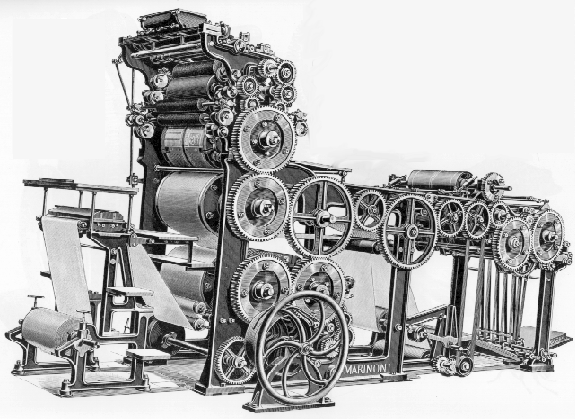
Before I get into the details of what's about to happen, I want to make sure we understand the territory. We're about to discuss things that range in size by a factor of a billion to one, so it's useful to go over the distance scale so we don't confuse millions and billions the way the politicians do.
Let's start with the measure of all things, a human being. Humans are on the order of metres in size, actually closer to two metres, but we can ignore ones and twos when talking about factors of 1000, as we're about to do.
Most of the history of technology has been built to this scale, and tended to look something like this.

If an object has to be assembled by people, in many cases powered by people, and operated by people, it doesn't make any sense to make it smaller than people can reasonably use, notwithstanding the design of modern car stereos.
The size of mechanical parts is governed by the materials that compose them and the scale of the machines used to fabricate them. Both imposed severe limitations on miniaturisation throughout most of history, limitations that were surmounted only with great difficulty and expense when absolutely necessary, as in the design of watches.
Wherever technology leads us, effective design at this scale will remain important as long as humans use the products. This is the domain of user interface and ergonomics.